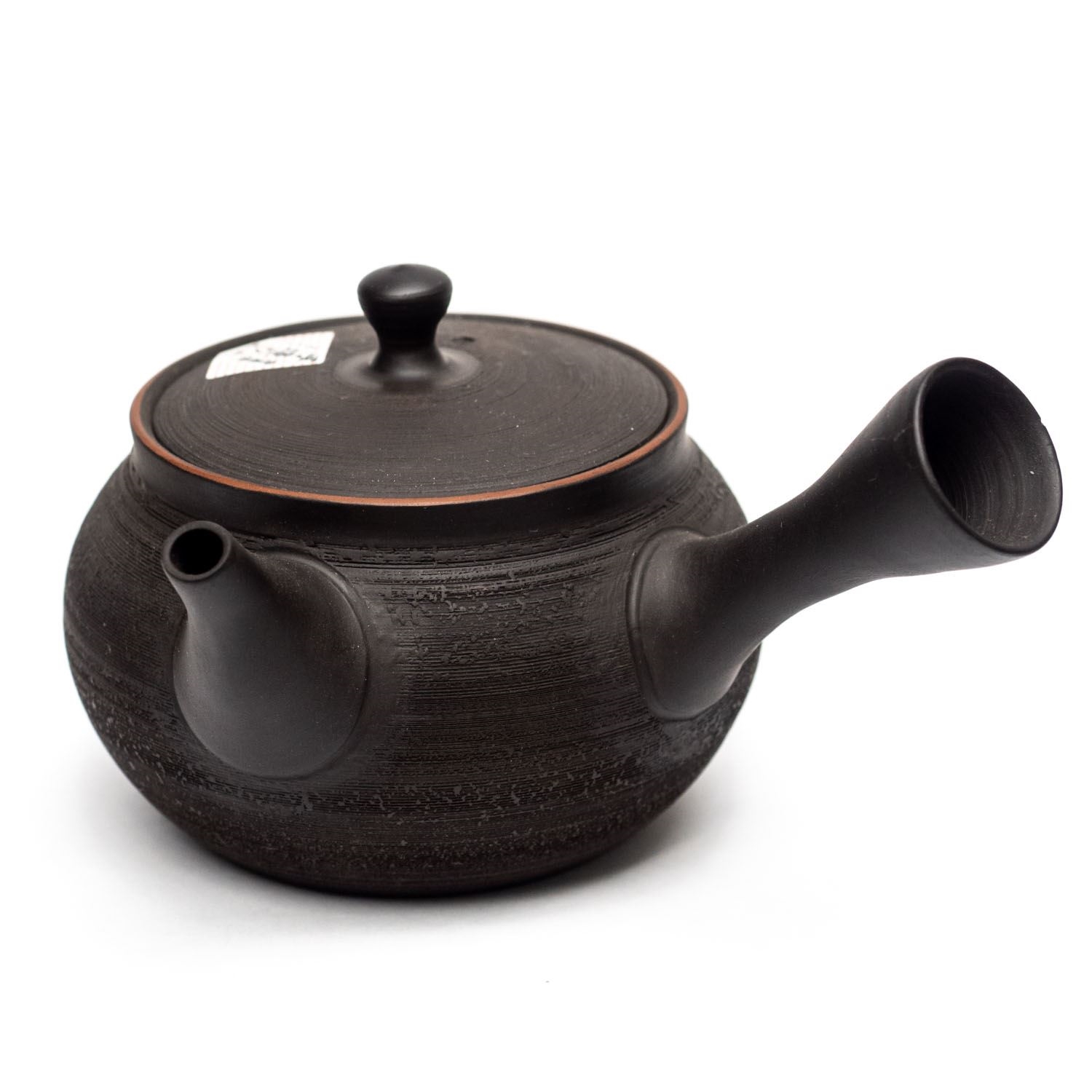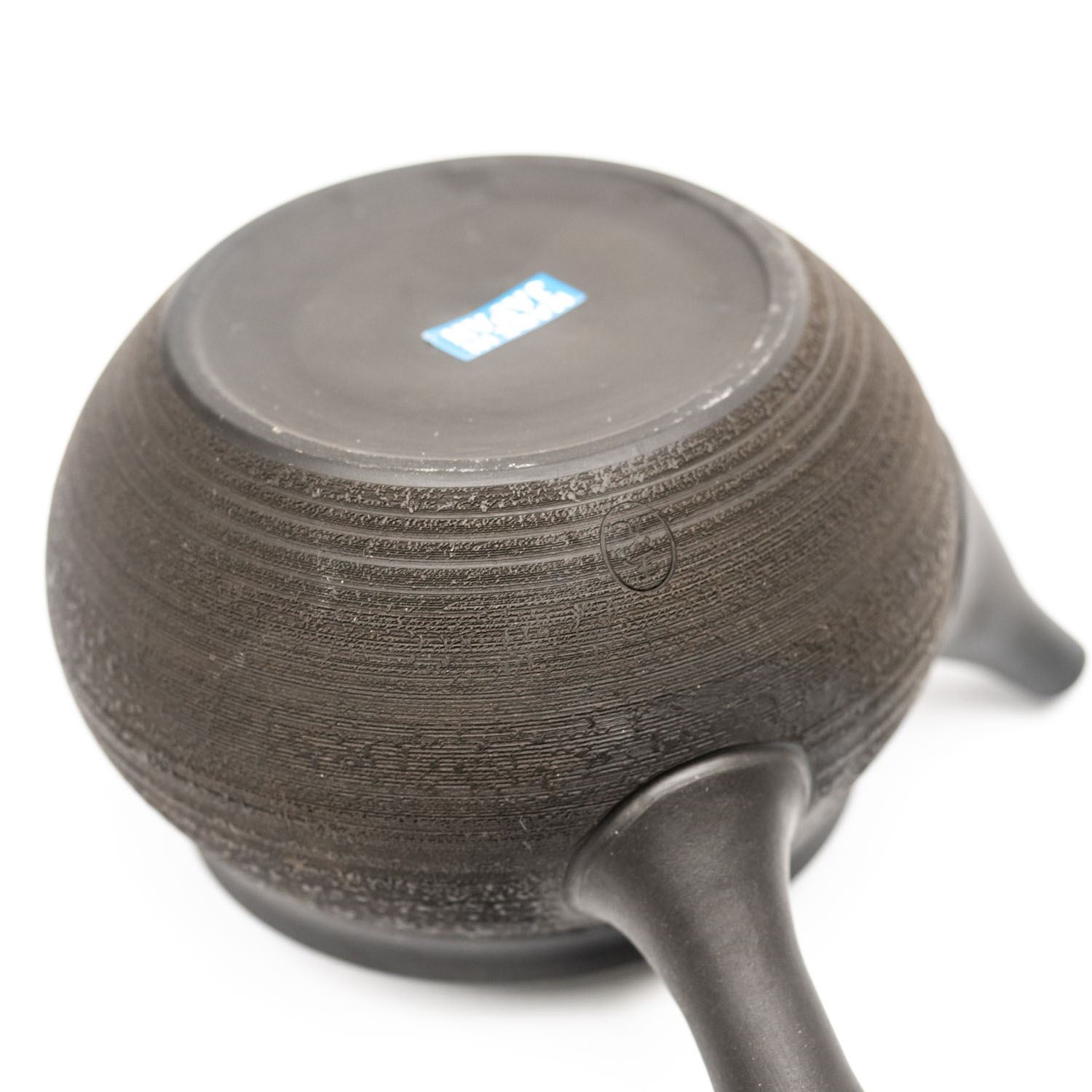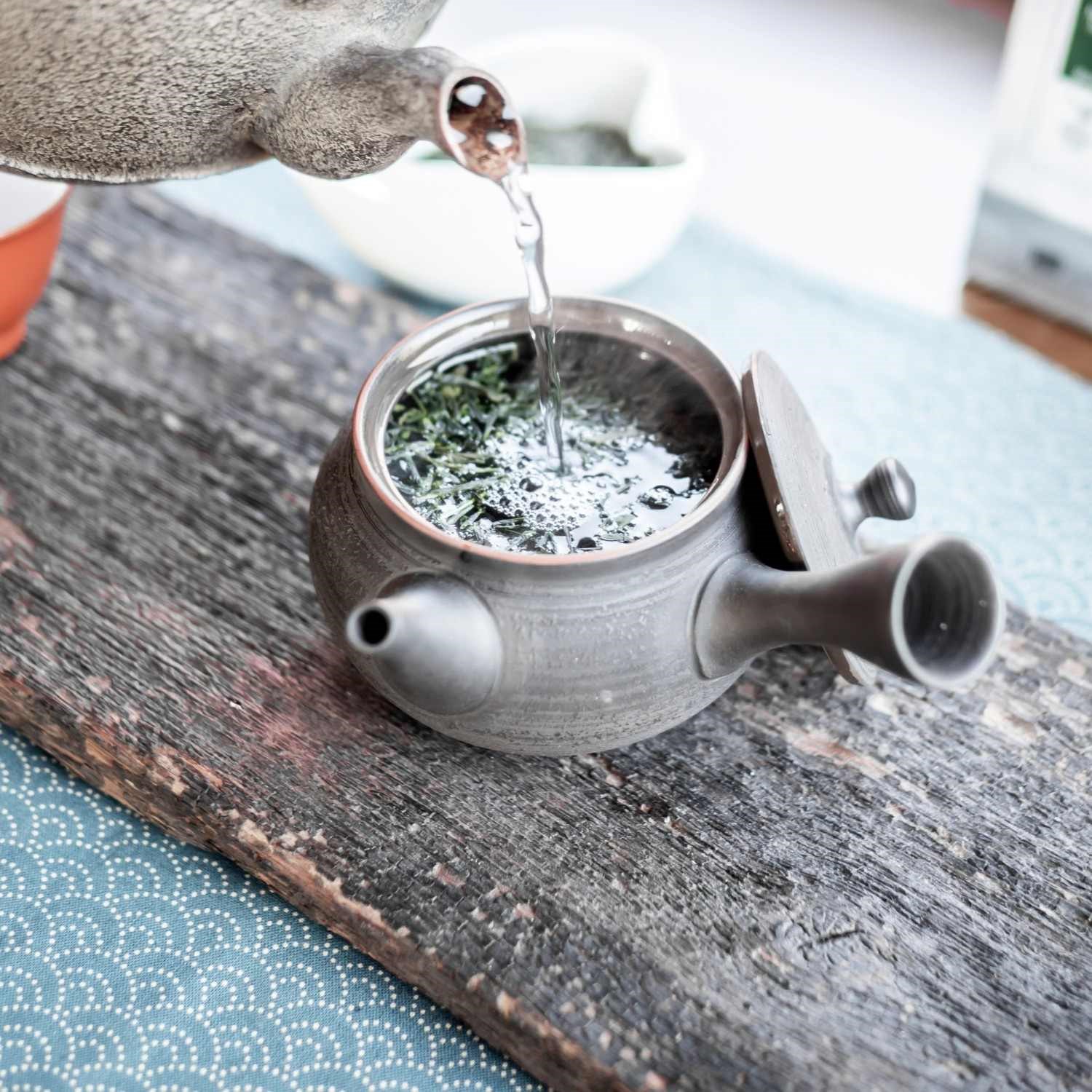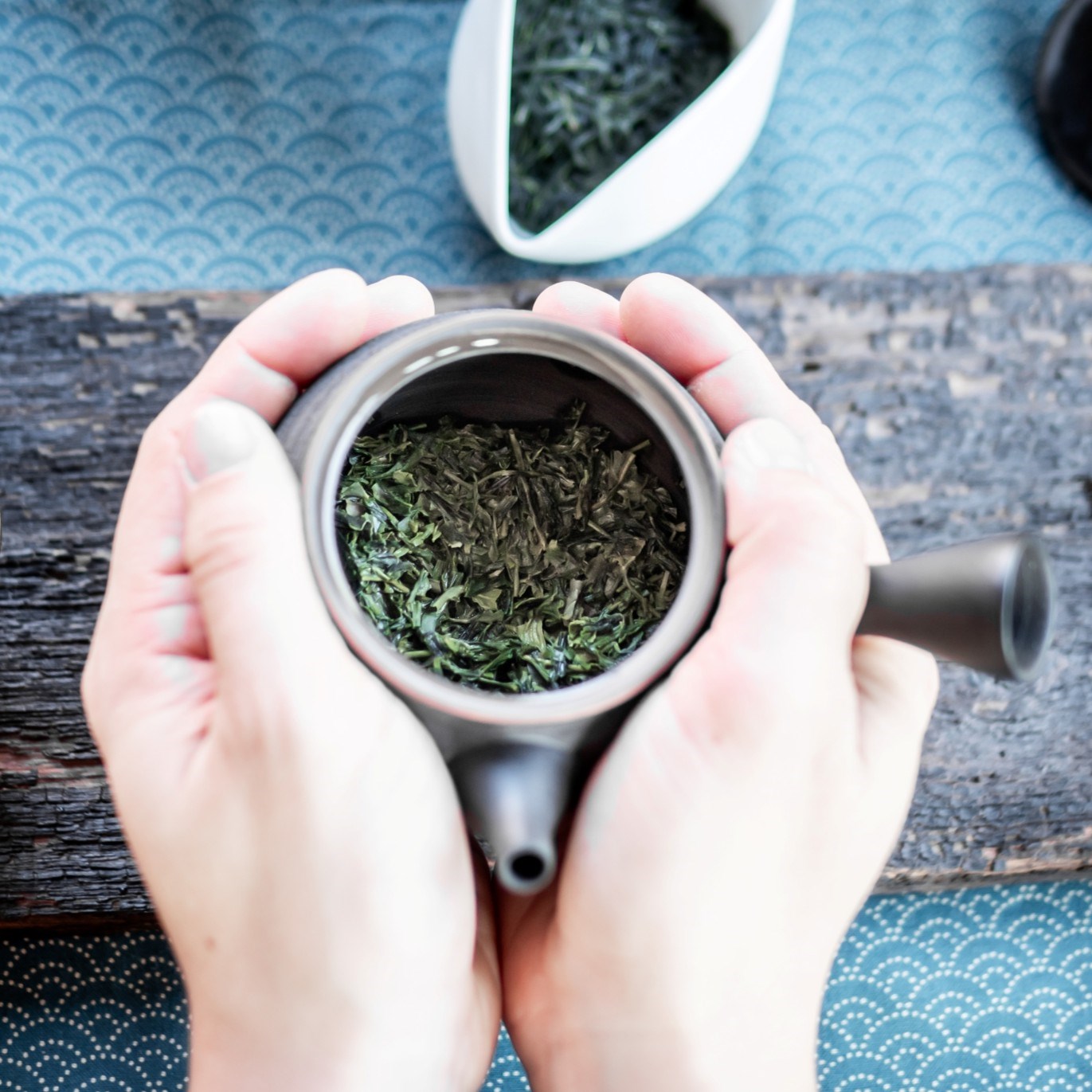One-handed Teapot "Japan Kyusu Tokoname Gyokko" (140ml)
This side-handle teapot, or "one-handed teapot", is a traditional Japanese teapot made of clay and used for brewing green tea. Called Kyusu because of its shape, the teapot is handmade - each piece is unique!
"Tokoname" refers to the oldest of Japan's "Six Ancient Kilns", where ceramics have been fired since the year 1100 and which has become an important centre for ceramic production in Tokoname. The Tokoname side-handle teapots, made from the finest regional ferruginous clay, are famous for the first-class taste of the teas prepared in them and, at the same time, for the visual delight they provide, even with multiple infusions.
The two side-handle teapots (no. 13151 for 280 ml and no. 13152 for 140 ml) with an internal ceramic strainer are made exclusively for TeaGschwendner by Umehara Hirotaka. The irregular décor, reminiscent of pine bark, is striking. The embossed stripes give the pot an interesting feel. This pot was fired in a reduction firing; thus, the actually red clay was characteristically coloured black due to the high iron content. The red colour of the clay is revealed on the finely ground upper rim of the lid and forms a beautiful contrast to the dark body of the pot.
{{ store.zipCode }} {{ store.city }}
- {{ translateDay(store, weekDay.number) }}:
- {{ formatTime(businessHour.businessHour.start) }} - {{ formatTime(businessHour.businessHour.end) }}
Properties
| Material: | Clay |
|---|---|
| Type: | teapots |
| Utensil: | Special equipment |
Exclusive Kyusu from the Japanese master of traditional craftsmanship
The maker of our beautiful side handle pots Umehara Hirotaka is best known by his pen name Gyokkô II(玉光, jewel sparkle). He is a respected maker of Tokoname pots and was awarded the official title of "Master of Traditional Crafts"(伝統工芸士).
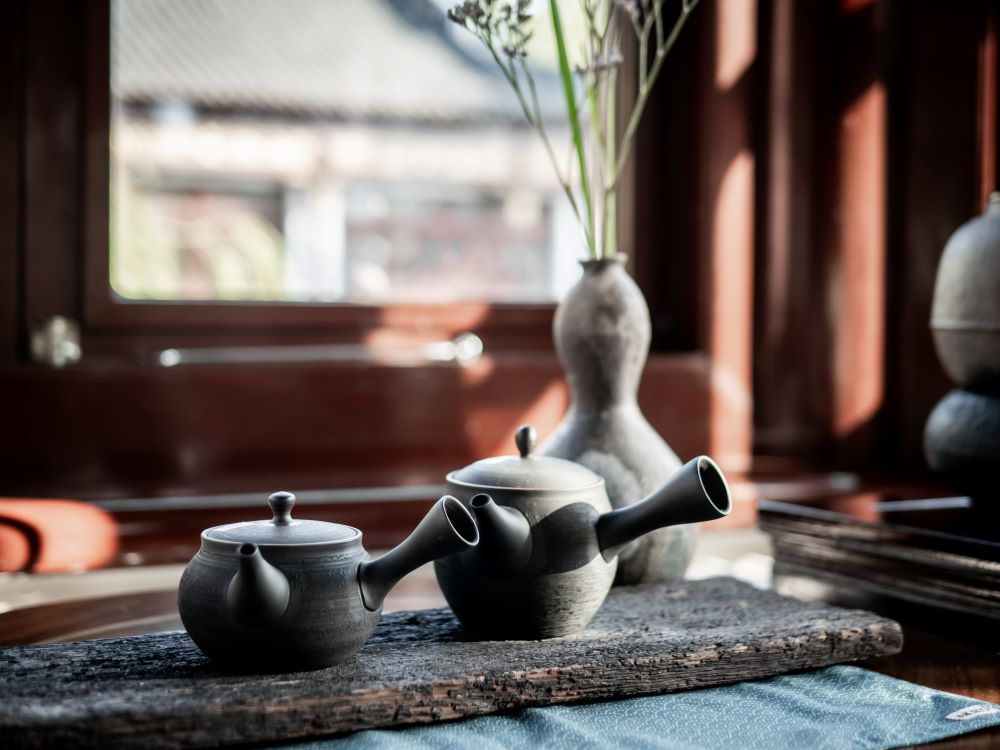
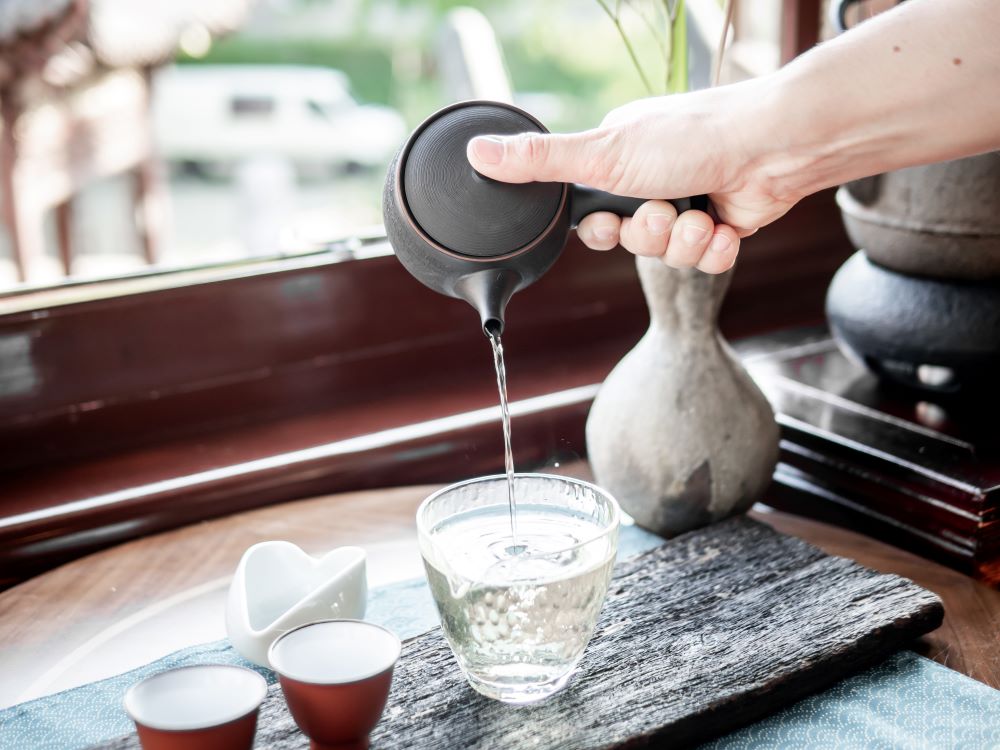
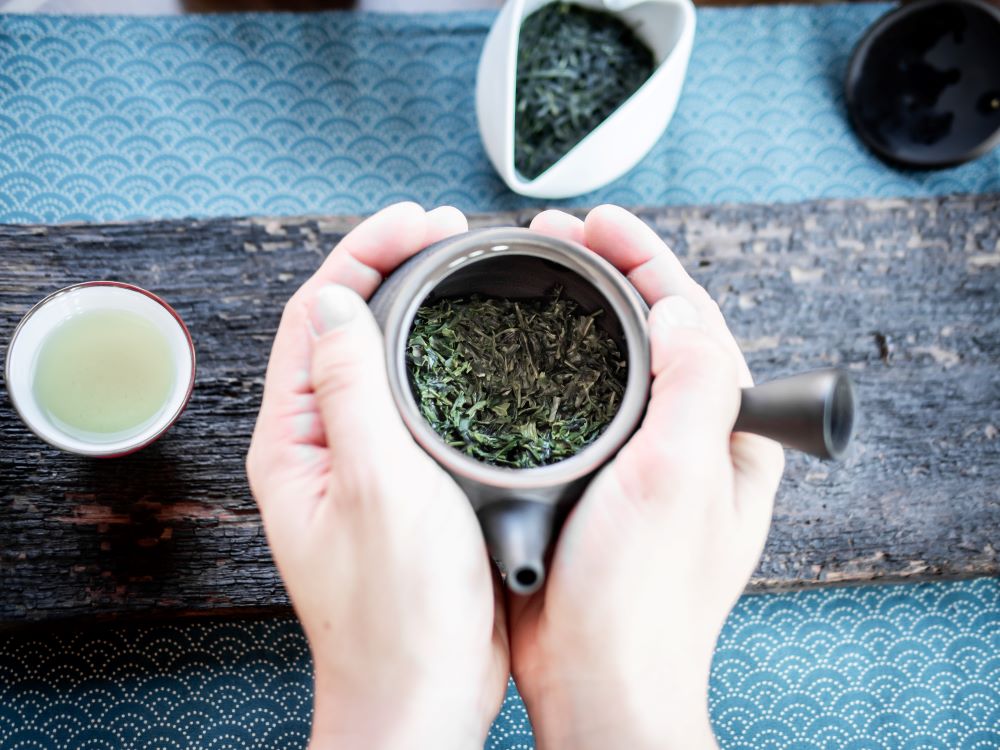
The emergence of red Shudei pottery
Side handle teapots made exclusively for TeaGschwendner
Perfect for brewing Japanese teas
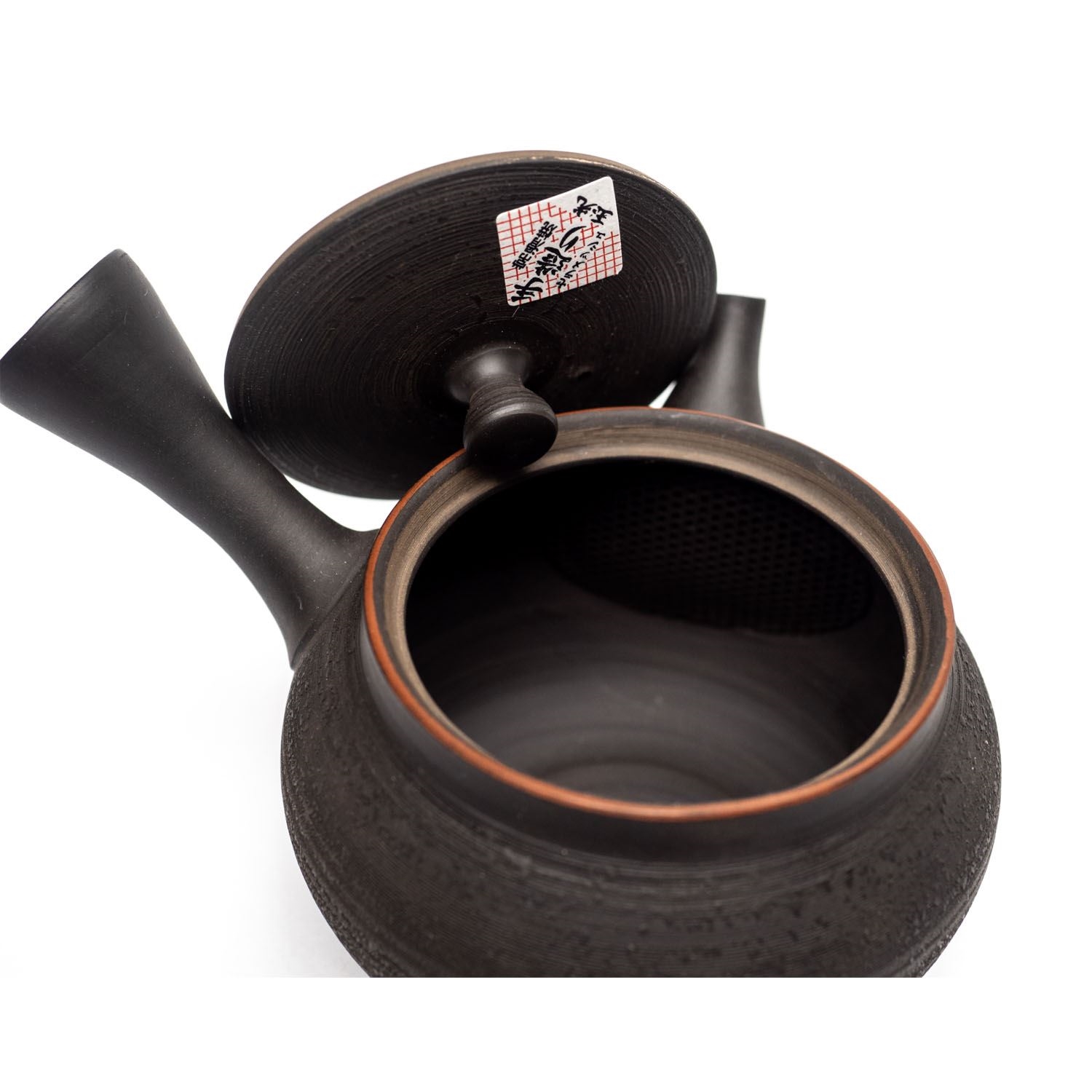
Reviews
All reviews (0)
Distribution
Login




